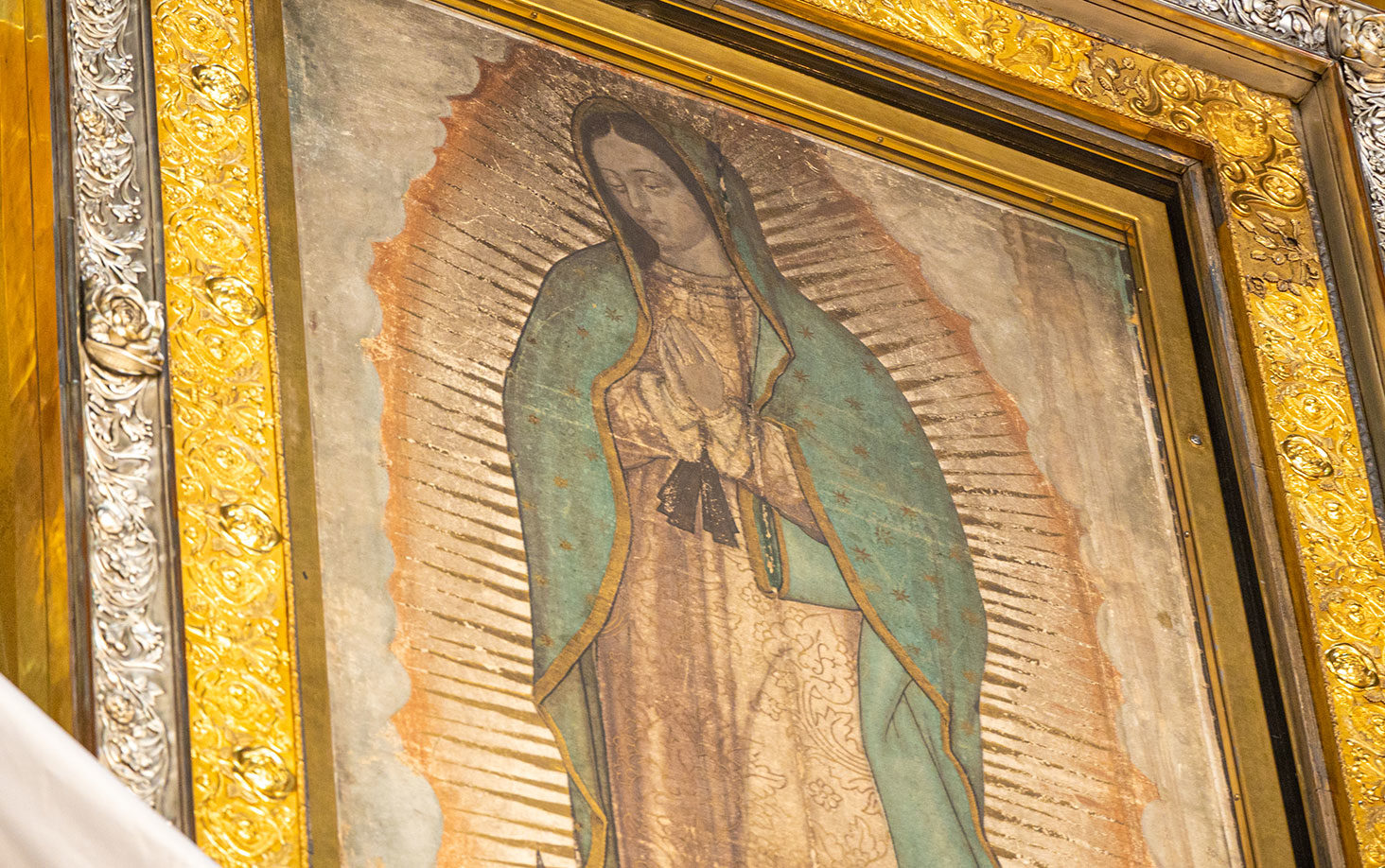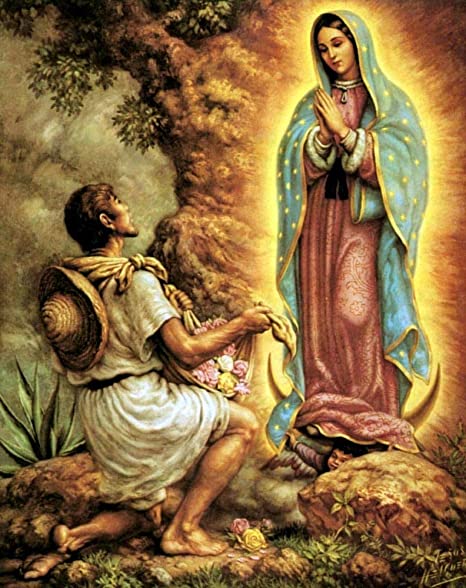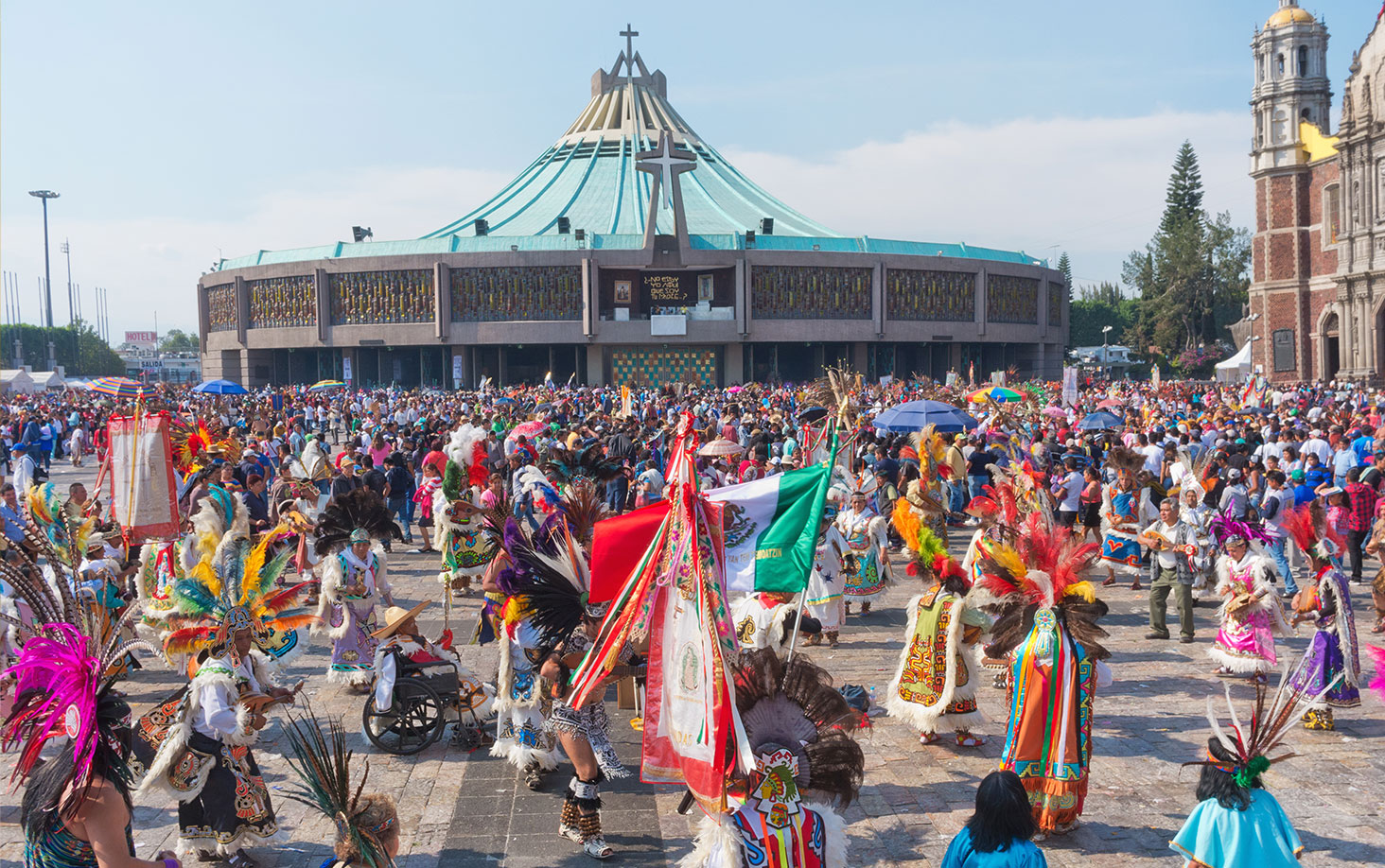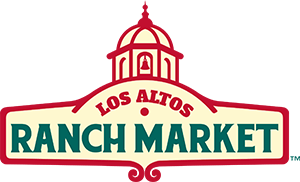Our Lady of Guadalupe
Things you should know about one of the most famous figures in the world.

Juan Diego’s Vision

Tradition says the Virgin Mary appeared to Juan Diego, a Nahua peasant and Christian convert, on Dec. 9, 1531, on the hill of Tepeyac (near present-day Mexico City). She spoke to him in the Nahatl language and directed him to ask the local bishop to erect a sanctuary at the foot of the hill. The bishop, however, wanted proof of her appearance.
The Virgin Mary appeared again to Juan Diego on Dec. 12, 1531, and instructed him to pick roses from the barren hill. Diego put the flowers in his tilma, or cloak. When he opened the cloak before the bishop, the portrait of Mary appeared on it.
The church approved the apparition in 1555 and Our Lady of Guadalupe was solemnly crowned Queen of the Mexican people in the name of Pope Leo XIII in 1895. She’s also regarded as “the Mother of the Americas.”

Today, it is one of the most famous shrines in the world. Every year, 20 million people visit the Basilica of Guadalupe where the cloth is displayed. An estimated 3 million pilgrims visit on Dec. 12, her feast day.
“Las Mañanitas a la Virgen de Guadalupe” Tradition
On Our Lady of Guadalupe’s feast day (December 12th), the faithful offer roses, and place them by her image. “Las mañanitas” is a Mexican, traditional birthday song sung early in the morning, to awaken the birthday celebrant. Prior to morning mass, it’s typical for mariachis across the Americas to serenade Our Lady of Guadalupe with Las Mañanitas song.
Receptions often follow the morning mass serving up breakfast, Mexican sweet breads, tamales, coffee, hot chocolate champurrados, all while mariachis continue to play traditional music.

Sources: University of Dayton’s Marian Library, recognized internationally as a source of expert information on the Virgin Mary
www.nationalshrine.org

